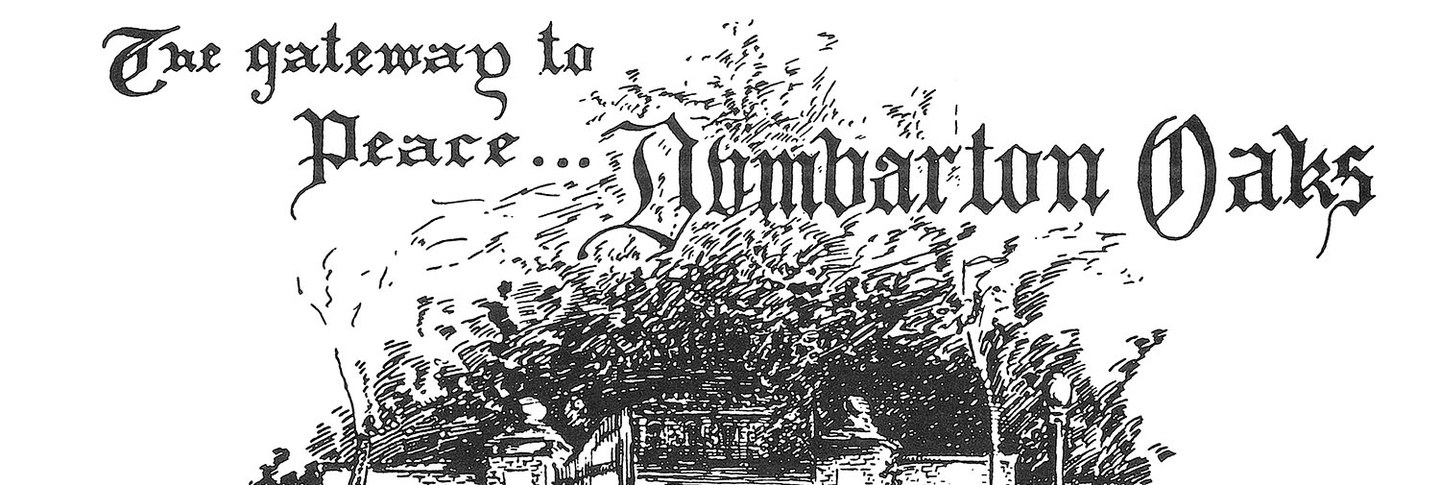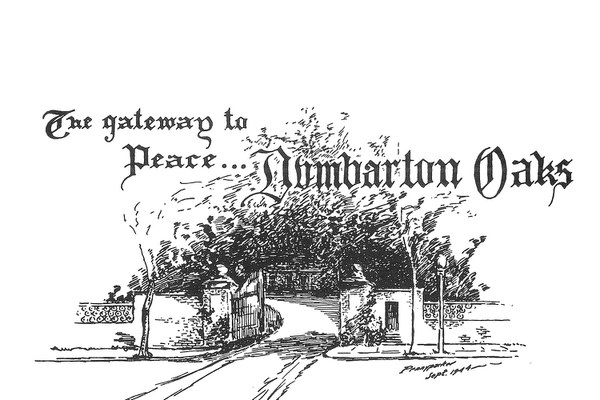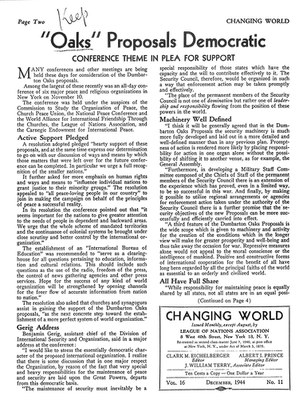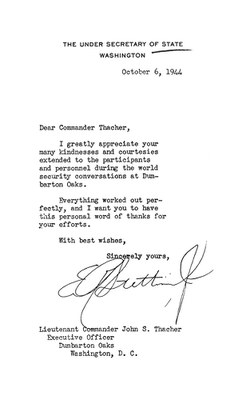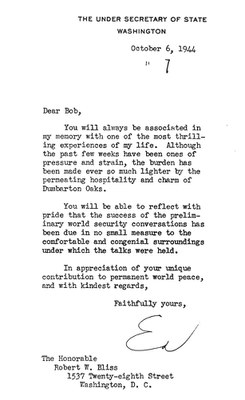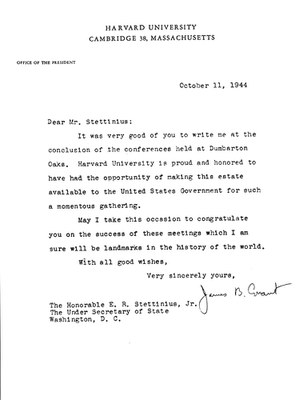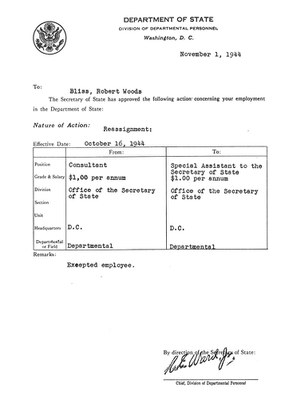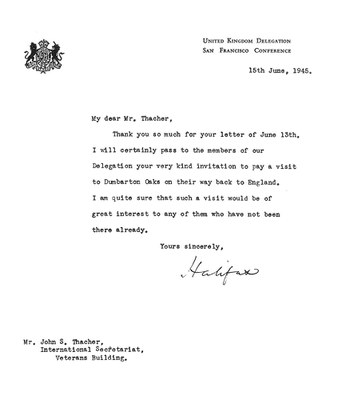
With enduring peace at stake, all steps were taken to increase the likelihood of success. It was hoped that by holding the informal conference in the luxurious and well-maintained Dumbarton Oaks, delegates would be more apt to engage in discussions of global harmony and security. Thus, the tranquility of those in attendance was a major consideration throughout the proceedings at Dumbarton Oaks. The success of the Dumbarton Oaks Conversations can be measured by the prompt formation of the United Nations, an organization founded just over a year later. Consisting of fifty-one member nations at its creation, the United Nations pledged to devote itself to the liberation of future generations from the devastation of war, the protection of human rights, and the promotion of justice and social progress. The conversations and agreements at Dumbarton Oaks directly fostered the formation of this cooperative international body.
The stated purposes of the proposed international organization were:
- To maintain international peace and security; and to that end to take effective collective measures for the prevention and removal of threats to the peace and the suppression of acts of aggression or other breaches of the peace, and to bring about by peaceful means adjustment or settlement of international disputes which may lead to a breach of the peace;
- to develop friendly relations among nations and to take other appropriate measures to strengthen universal peace;
- to achieve international co-operation in the solution of international economic, social and other humanitarian problems; and
- to afford a center for harmonizing the actions of nations in the achievement of these common ends.
The results of the Conversations are assessed by Charles E. Bohlen, who was attached to the American delegation as an advisor on Soviet affairs, in his book, Witness to History, 1929–1969, as follows: “Dumbarton Oaks settled all but two issues regarding the organization of the United Nations—the voting procedure in the Security Council and the Soviet pressure for the admission of all sixteen of the Soviet republics to the General Assembly. It took the conference at Yalta, plus further negotiations with Moscow, before these issues were solved.”
Documents
